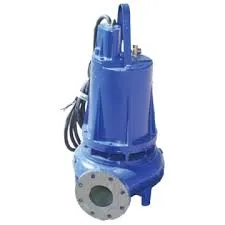Dutch
- Afrikaans
- Albanian
- Amharic
- Arabic
- Armenian
- Azerbaijani
- Basque
- Belarusian
- Bengali
- Bosnian
- Bulgarian
- Catalan
- Cebuano
- Corsican
- Croatian
- Czech
- Danish
- Dutch
- English
- Esperanto
- Estonian
- Finnish
- French
- Frisian
- Galician
- Georgian
- German
- Greek
- Gujarati
- Haitian Creole
- hausa
- hawaiian
- Hebrew
- Hindi
- Miao
- Hungarian
- Icelandic
- igbo
- Indonesian
- irish
- Italian
- Japanese
- Javanese
- Kannada
- kazakh
- Khmer
- Rwandese
- Korean
- Kurdish
- Kyrgyz
- Lao
- Latin
- Latvian
- Lithuanian
- Luxembourgish
- Macedonian
- Malgashi
- Malay
- Malayalam
- Maltese
- Maori
- Marathi
- Mongolian
- Myanmar
- Nepali
- Norwegian
- Norwegian
- Occitan
- Pashto
- Persian
- Polish
- Portuguese
- Punjabi
- Romanian
- Russian
- Samoan
- Scottish Gaelic
- Serbian
- Sesotho
- Shona
- Sindhi
- Sinhala
- Slovak
- Slovenian
- Somali
- Spanish
- Sundanese
- Swahili
- Swedish
- Tagalog
- Tajik
- Tamil
- Tatar
- Telugu
- Thai
- Turkish
- Turkmen
- Ukrainian
- Urdu
- Uighur
- Uzbek
- Vietnamese
- Welsh
- Bantu
- Yiddish
- Yoruba
- Zulu
Telephone: +86 13120555503
Email: frank@cypump.com
dec . 06, 2024 11:03 Back to list
Design and Functionality of Slurry Pump Cover Plates in Industrial Applications
Understanding Slurry Pump Cover Plates An Essential Component for Efficiency and Durability
Slurry pumps are critical components in many industrial processes, especially in mining, mineral processing, and construction. They are designed to handle abrasive and viscous materials, efficiently transporting mixtures of solids and liquids, commonly referred to as slurries. Among the essential components of a slurry pump is the cover plate, which plays a significant role in the pump's performance, durability, and maintenance. This article will delve into the importance of slurry pump cover plates, their design, materials, and maintenance considerations.
The Role of Cover Plates in Slurry Pumps
Cover plates are protective and functional components that serve various purposes in slurry pumps. Positioned at the pump's casing, these plates enclose the impeller and volute, creating a sealed environment necessary for maintaining suction. The cover plate helps regulate the flow of slurry through the pump, ensuring optimal performance and efficiency by preventing leakage.
One of the primary functions of a cover plate is to support the pump’s internal components, including the impeller, shaft, and bearings. By securely holding these parts in place, the cover plate reduces vibrations and ensures a smooth operation. Furthermore, it helps to maintain proper alignment of the components, thereby extending the lifespan of the pump.
Designs and Materials
Cover plates are designed with precision to accommodate the specific requirements of various slurry pumps. When it comes to design, considerations such as size, shape, and attachment methods are important. Most cover plates are equipped with bolt holes, allowing for easy installation and removal, which is crucial for maintenance and repairs.
slurry pump cover plate

The materials used for cover plates should possess excellent wear resistance and corrosion protection. Common materials include high chromium alloys, rubber-lined steel, and other composites that can withstand the abrasive nature of slurries. The choice of material depends on the specific application, the type of slurry being transported, and the operating conditions of the pump. For instance, materials that exhibit higher hardness are preferable for highly abrasive slurries, while rubber-lined options might be suitable for less abrasive materials that can still be corrosive.
Maintenance and Inspection
Proper maintenance of the cover plate is crucial to ensure the uninterrupted operation of slurry pumps. Regular inspections should be carried out to identify wear and tear, cracks, or corrosion that could compromise the efficacy of the pump. Signs of wear may include uneven wear patterns, which can indicate misalignment or imbalance within the pump.
During maintenance, it is essential to remove the cover plate carefully, taking note of the condition of the gasket or sealing material to ensure a proper seal during reinstallation. Cleaning the cover plate and surrounding areas of any built-up sludge or abrasive material is crucial to prevent damage upon reassembly. It's also the ideal time to inspect the impeller and other internal components for signs of wear.
Conclusion
In conclusion, the cover plate of a slurry pump is more than just a protective component. It is integral to the pump's overall performance, reliability, and maintenance requirements. By understanding the critical functions, designs, materials, and maintenance practices associated with slurry pump cover plates, industries that rely on these pumps can optimize operations and enhance productivity. Investing in quality cover plates and adhering to regular maintenance schedules will significantly improve the lifespan and effectiveness of slurry pumps, contributing to smoother industrial processes. As industries continue to evolve and demand more efficient pumping solutions, the importance of the cover plate will remain a cornerstone of slurry pump technology.
-
High-Performance Air Pumps for Sand & Gravel | Efficient Transport
NewsAug.03,2025
-
ISG Series Vertical Pipeline Pump - Chi Yuan Pumps Co., LTD.|Energy Efficiency, Corrosion Resistance
NewsAug.03,2025
-
ISG Series Pipeline Pump - Chi Yuan Pumps | Energy Efficiency&Compact Design
NewsAug.03,2025
-
ISG Series Vertical Pipeline Pump - Chi Yuan Pumps Co., LTD.|High Efficiency, Low Noise, Durable
NewsAug.02,2025
-
ISG Series Vertical Pipeline Pump - Chi Yuan Pumps | High Efficiency, Low Noise
NewsAug.02,2025
-
ISG Series Vertical Pipeline Pump- Chi Yuan Pumps Co., LTD.|High Efficiency&Compact Design
NewsAug.02,2025










